Known as the site of the world’s longest continuous bridge, Lake Pontchartrain is actually an estuary located in southern Louisiana. It connects to the Gulf of Mexico and only reaches an average depth of around 12 feet — though its deepest parts delve over 65 feet below the surface. Thanks to its predominantly shallow depth, the sun can reach the bottom and allows beds of grass to grow. This grass, in turn, begets small marine life that attracts dozens of species of birds, fish, and mammals to feed and raise their young.
Throughout the last 200 years, fishermen have identified 123 different species of fish in the lake’s 40-mile radius. If you’re looking for a lake in Louisiana to fish a wide variety of species, consider Lake Pontchartrain. Nearly two dozen fish species swim in abundance through its waves.
23 Fish You Can Catch Year-Round at Lake Pontchartrain
Depending on the time of year, anglers have a higher chance of catching some species over others. Trout tend to frequent the water during the fall and winter months while sheepshead congregate around underwater structures like the lake’s pilings in the summer. Before you head out on the lake, take note of Louisiana’s creel limit — the total number of fish, by species, an angler can catch in a single day.
Spotted Seatrout
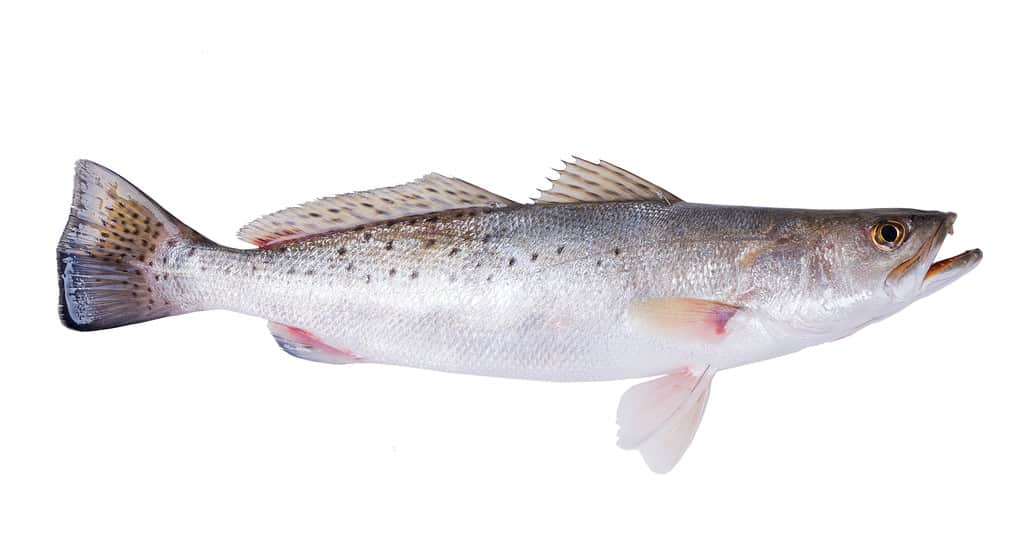
The specks’ canine teeth allow them to crush the shells of crustaceans.
©IrinaK/Shutterstock.com
Also known as speckled seatrout, the spotted seatrout or “specks” likes shallow, grassy flats and in-shore waters. They’ll usually move to colder, deeper waters in the winter months. Because they have prominent canine teeth, the spotted seatrout’s diet consists of shrimp and other crustaceans. Especially in Louisiana, the spotted seatrout ranks as one of the top recreational species to fish.
When to catch/chance of catching: According to the most recent data from FishingStatus.com, anglers have a 27% chance of catching the spotted seatrout in August. While this is the top fish to catch at the end of summer, it remains in abundance until October; the fish’s peak catch month in Lake Pontchartrain.
Creel limits, if any: The minimum total length of a speckled seatrout should be 12 inches. There’s a daily limit of 25 per person, though some areas have a smaller bag limit of 15 a day.
Sand Seatrout
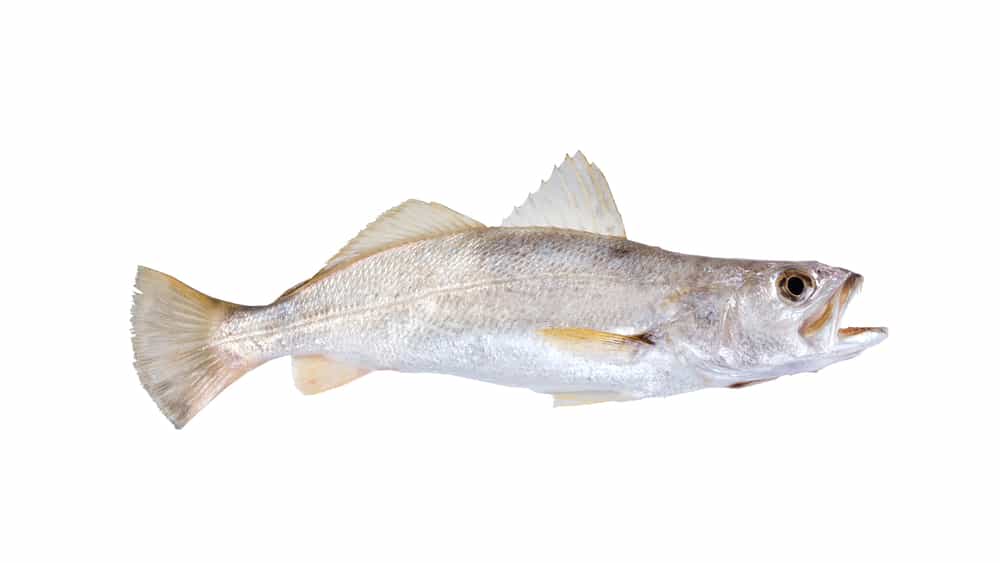
Also known as white trout, these fish spawn in the spring for big populations in July.
©IrinaK/Shutterstock.com
The sand seatrout, commonly known as the sand weakfish or white trout, has silver scales and rows of teeth. It remains a small-sized fish at the largest-recorded length of 25 inches and the heaviest recorded weight was only 6.2 pounds. Because of the sand seatrout’s similarities to the common weakfish, ichthyologists and researchers suggest they might be related.
When to catch/chance of catching: Sand seatrout has an abundant population come July. For the rest of the summer and into the winter, the chance to catch one hovers around 6% to 8%.
Creel limits, if any: Lucky for anglers, if they’re able to find a sand seatrout school, there’s no bag or possession limit on the species in Louisiana waters.
Spotted Gar
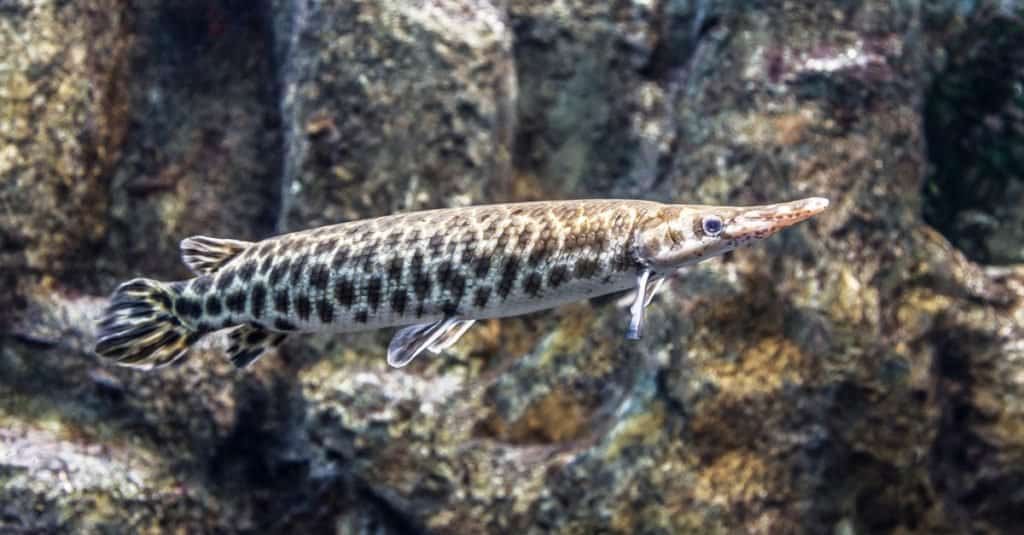
Spotted gar
are a prize to catch — but they aren’t valued for their meat.
©volkova natalia/Shutterstock.com
While the spotted gar remains a challenging fish to catch, nearly no one in North America eats them after catching them. Spotted gars’ bodies have high levels of mercury, and consuming them poses many health risks — including cancer. This species of gar is one of the smallest in North America. They have elongated mouths, rows of teeth, and the unique ability to gup air to reconcile the low oxygen levels in the slow-moving water it likes to inhabit.
When to catch/chance of catching: Usually, anglers will find the spotted gar throughout the year with no specific peak month. If you’re fishing for spotted gar, you may see them pop up for air during the darker hours of the day.
Creel limits, if any: The spotted gar, as well as the freshwater fish redear sunfish and the yellow bullhead, have no size or daily creel limits in Lake Pontchartrain.
Alligator Gar
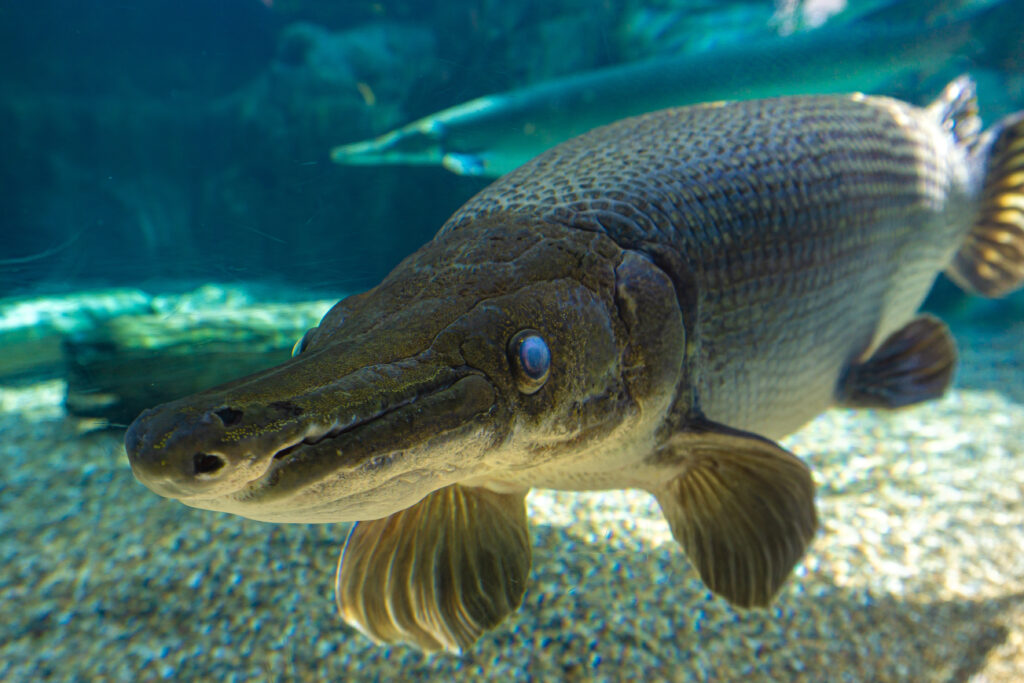
Some biologists consider the
alligator
gar a “living fossil” that swims in fresh and saltwater lakes.
©TKBackyard/Shutterstock.com
Contrary to its smaller-sized cousin, the alligator gar reigns as the largest of the gar species native to North American waters — it’s also one of the largest freshwater fish in those same waters. Alligator gars can grow up to 10 feet long. Unlike others in its family, the alligator gar has two rows of sharp teeth on their upper jaw that impale and hold prey. They’re incredibly adaptable fish too — alligator gar can live in bays, marshes, freshwater lakes, and swamps. While some agencies saw the alligator gar as a nuisance species in the early 1900s, education and a deeper understanding of their role in the ecosystem brought protection by state and federal resources.
When to catch/chance of catching: This species tends to frequent Lake Pontchartrain’s waters until the fall weather arrives. Then, they make their way to warmer waters. In 2015, an angler caught a 7-foot, 180-pound alligator gar during a September fishing trip.
Creel limits, if any: Though the fish is moderately protected, no bag or possession limits exist for catching alligator gar in Louisiana.
Crevalle Jack
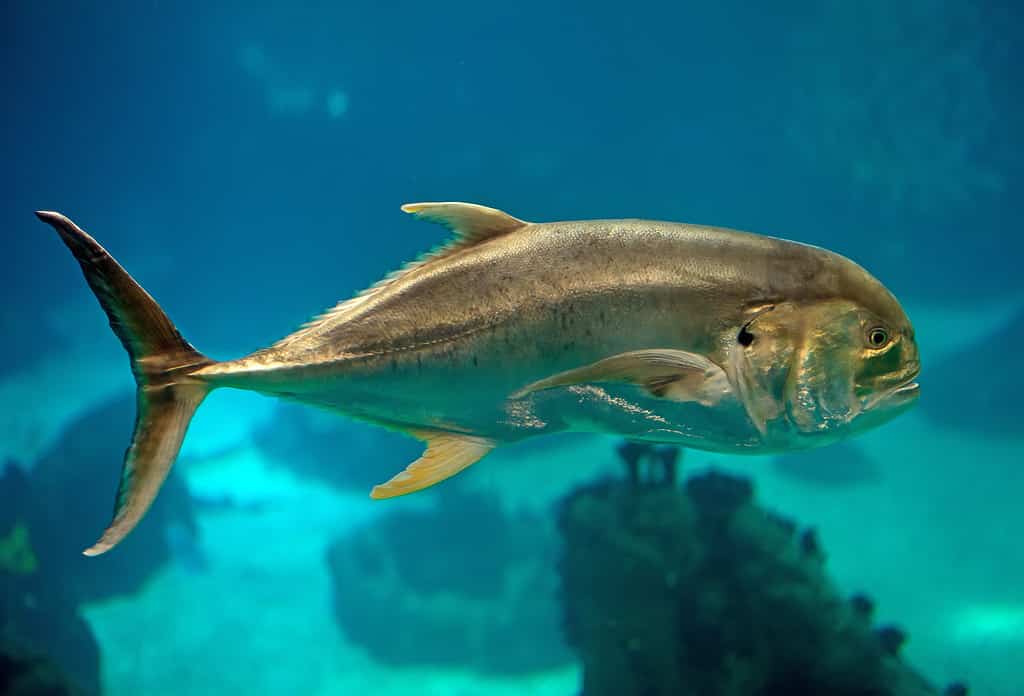
These fish are famous for their ferocious hunting instinct, which makes them valuable game fish.
©M-Production/Shutterstock.com
The crevalle jack is one of the largest fish in its family, with a record length reaching just over four feet. However, most crevalle jack in Lake Pontchartrain will measure around two feet in length. It frequents warm waters, and mass casualties occur for populations that fail to
When to catch/chance of catching: With no closed season, you can fish for the crevalle jack throughout its high season between July and August. Anglers who want a challenge can attempt to find the fish in its long low season, which stretches between November through April.
Creel limits, if any: While fishing limits exist for the similarly-named almaco jack, the Louisiana Department of Wildlife and Fisheries (WLF) does not report any bag, size, or possession limits for the crevalle jack.
Atlantic Croaker
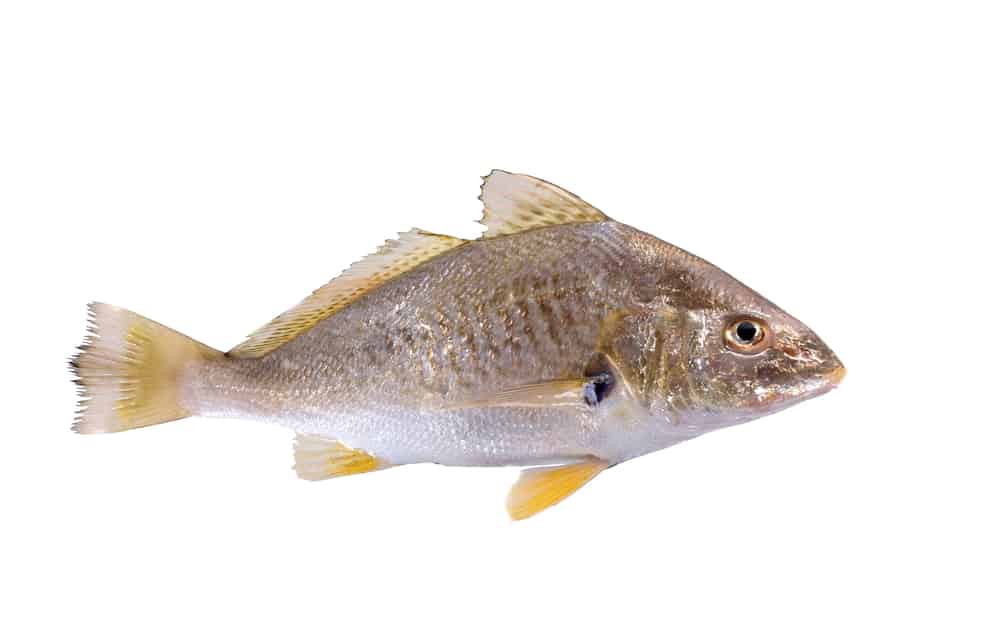
This color-changing fish turns golden during spawning season.
©IrinaK/Shutterstock.com
Closely related to the black and red drum fish, the silver perch, and the spotted seatrout, the Atlantic croaker is named for the noise the fish makes as it swims. In fact, this fish is the loudest in the drum family of fish. Croakers transform in color during the spawning season to a striking golden color. Like the spotted seatrout, the Atlantic croaker is a much-loved species to catch by anglers.
When to catch/chance of catching: Anglers interested in going after the Atlantic croaker have an 18.5% catch rate in the summer based on the most recent data. Its peak month for catching is July, but anglers can find it in larger populations between mid-summer and early fall.
Creel limits, if any: The Atlantic croaker doesn’t have any fishing limits. However, it’s closely-related drum cousins do — so make sure you know the difference between a croaker and a drum fish.
Red Drum
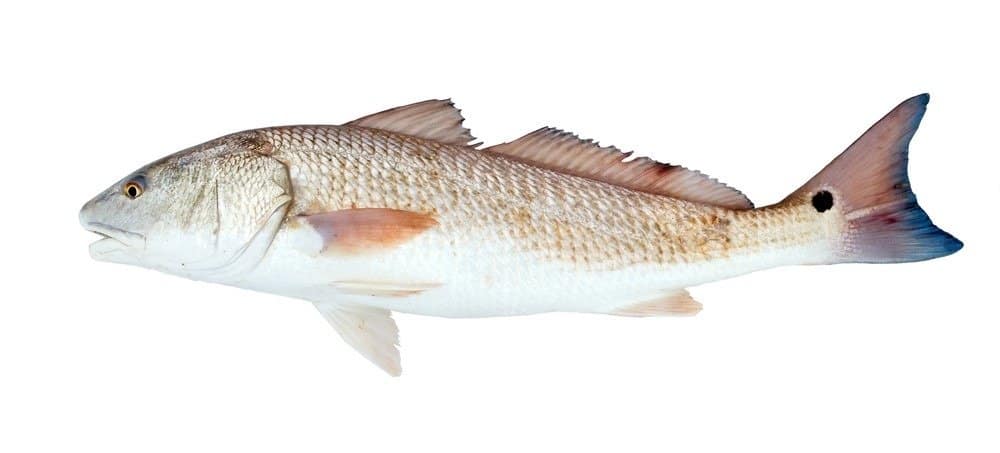
Red drum fish have a black spot on their tails to confuse predators.
©IrinaK/Shutterstock.com
Commonly known as the redfish at Lake Pontchartrain, the red drum ranks as the most hunted game fish in the United States for its economic value and massive size. Anglers have found red drums as heavy as 94 pounds. For food, red drums rove the bottom of shallow waters, biting the seafloor to capture food in its downturned mouth. While similar in look to the black drum, the red drum has a distinguishing black eye spot (or more than one) on its tail that fools predators into attacking the less-valuable tail, and not the head, of the red drum fish.
When to catch/chance of catching: Depending on your fishing spot, the red drum has a 9.87% catch rate based on the current count of 2031 catches in August. The peak month to fish for a red drum in Lake Pontchartrain is June.
Creel limits, if any: Red drums have a five-fish daily bag and possession limit per person. Size limits dictate the fish must have a 16-inch minimum total length and not exceed the length of 27 inches.
Black Drum
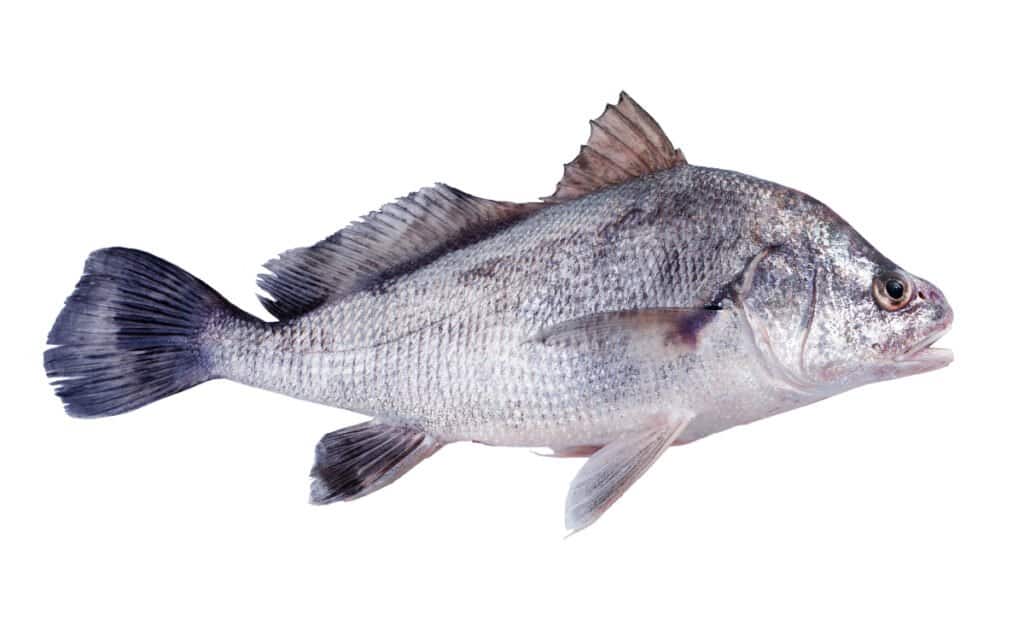
Black drum fish have pharyngeal teeth deep inside their throats.
©IrinaK/Shutterstock.com
The powerful jaw of the black drum influences its diet; its teeth and jaw have the ability to crush the shells of oysters and shellfish. Black drums range in weight between five and 30 pounds — though the largest ever recorded measured at a staggering 113 pounds. Like the other fish in its family, the black drum can produce “drumming” tones during mating season with sounds ranging between 100 and 500 Hz.
When to catch/chance of catching: July is the best time to find the black drum swimming in certain regions of Lake Pontchartrain. However, it’s a toss-up if you’ll come across one — there’s just over a 2.5% catch rate for this fish.
Creel limits, if any: Daily, there’s a five fish bag and possession limit per person. As for size, anglers can’t have more than one black drum fish over 27 inches in total length.
Gafftopsail Catfish
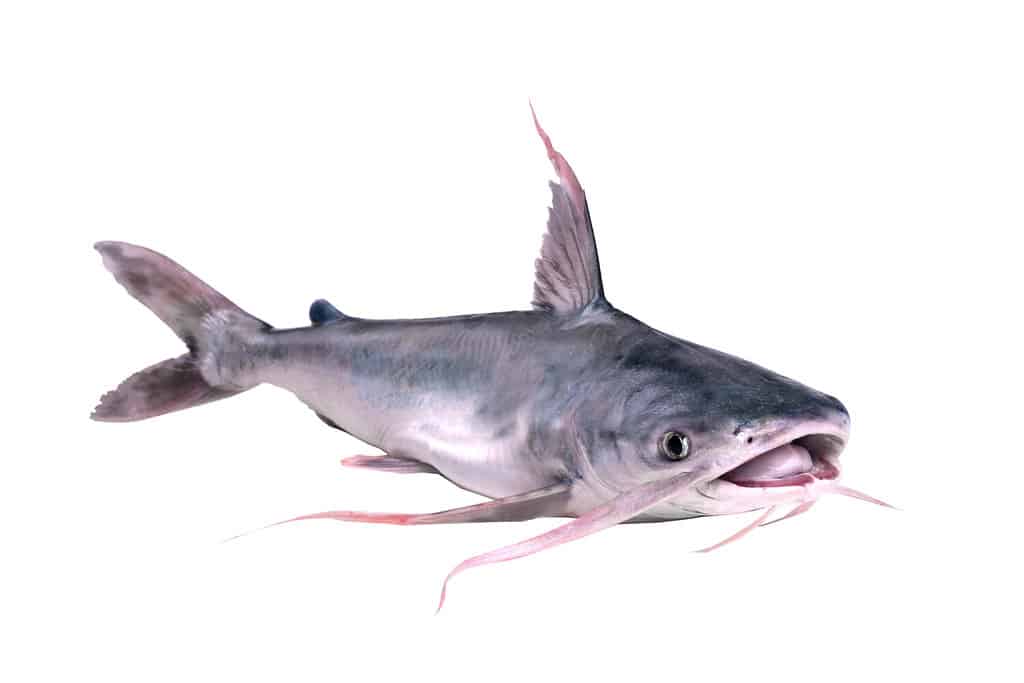
The gafftopsail
catfish
can incur painful stings with its barbs.
©IrinaK/Shutterstock.com
With a dorsal fin that looks like a topsail on a boat, these catfish have an interesting appearance and a surprising ability: their venomous spines cause painful stings. Both the pectoral and dorsal spines of a gafftopsail catfish are notorious among anglers for inflicting wounds during catching that swell like a bee sting. Because they’re strong fighters, anglers like to use hard lures and traps. In Louisiana, anglers can only use snagging devices for catfish; all others are prohibited.
When to catch/chance of catching: Though the peak month for catching the gafftopsail catfish is July, anglers have a hard time finding these elusive catfish. In the entire month of August, based on an average of historical data, fishermen only caught 595.
Creel limits, if any: No limits exist for catching the gafftopsail catfish in Louisiana! Only one catfish in Lake Pontchartrain has size, bag, and possession limits — the blue catfish.
Hardhead Catfish
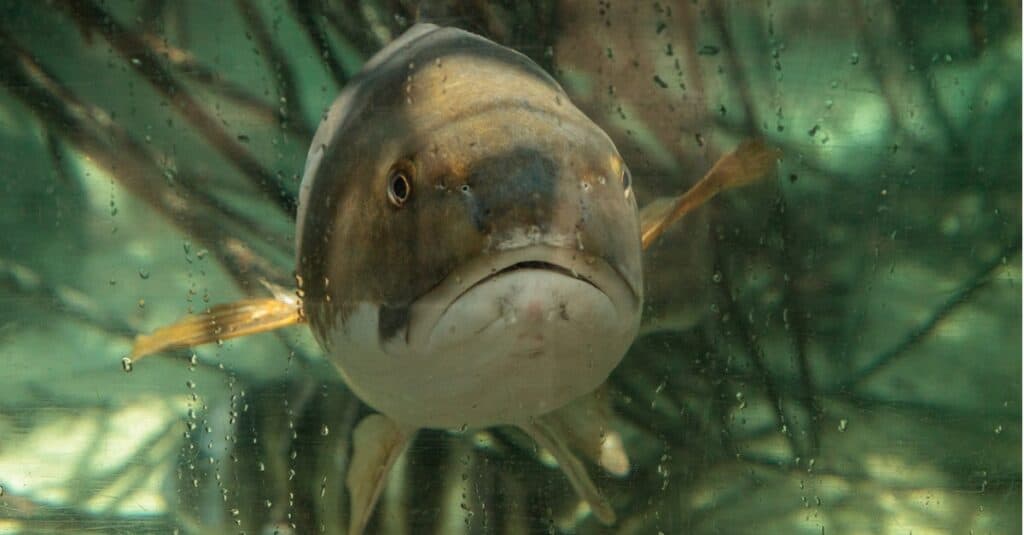
Named for their appearance and a bony plane, hardhead catfish frequent Lake Pontchartrain in the summer.
©iStock.com/LagunaticPhoto
Hardhead catfish look similar to gafftopsail catfish and even incur the same painful sting. This species of catfish gets its name from the bony plane near its dorsal fin. As a catch, they’re pretty small — most hardheaded catfish weigh between one and three pounds.
When to catch/chance of catching: Hardheaded catfish in Lake Pontchartrain have a 14.27% catch rate in August, so they remain a great species to target. While the fish swims in abundance all summer, May is the peak month to catch hardheaded catfish.
Creel limits, if any: Anglers in Lake Pontchartrain can fish for the hardhead catfish to their heart’s content. No bag, size, or possession limits exist. The only limitation of catfish fishing is the use of certain traps, though snagging devices are fine.
Blue Catfish

Blue catfish are massive and aggressive fish.
©Thomsonmg2000, cropped and adjusted by Kostka Martin / CC0 – License
An invasive species in some regions, the blue catfish is the largest species of North American catfish with the ability to live for up to 20 years. These massive fish set records for size, length, and weight. Their diet consists of any prey fish they’re able to catch — even other, smaller blue catfish. They’ll also eat crustaceans like crawfish, crabs, and clams. Interestingly, in the nearby Mississippi River, blue catfish are the only species that can eat adult Asian carp without consequences.
When to catch/chance of catching: March through May are usually the best months to target the blue catfish in Lake Pontchartrain.
Creel limits, if any: A 12-inch minimum length limit exists for the blue catfish. In all state waters, including Lake Pontchartrain, anglers can catch 100 catfish daily in the aggregate, with no more than 25 undersized catfish of the blue catfish combined with the channel catfish and the flathead catfish.
Channel Catfish
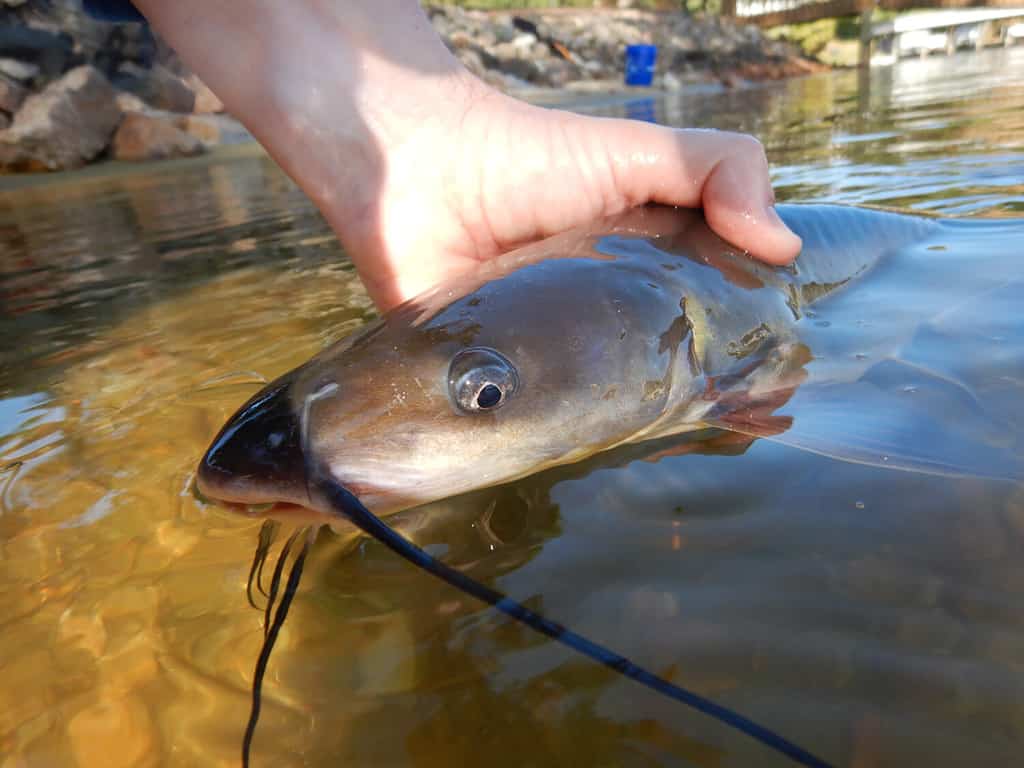
Kansas, Missouri, Nebraska, and Tennessee name the channel catfish as the state’s official fish.
©Brookieland/Shutterstock.com
Did you know that the channel catfish is so popularly fished, it’s the official fish of four U.S. states? Not only do millions of anglers target them as a challenging catch each year; many enjoy the taste of channel catfish, which contributes to the growing aquaculture industry. With very few teeth, channel catfish usually swallow the diet of snails, small fish, crustaceans, algae, and nuts whole. Channel catfish are native to North America but considered invasive in other countries.
When to catch/chance of catching: Channel catfish usually spawn between late spring and early summer — but Louisiana waters see spawning as late as mid-August. Anglers have a great chance of catching channel catfish in secluded areas that offer shade, like logs, stumps, and large roots in the water.
Creel limits, if any: Channel catfish, along with blue catfish and flathead catfish, have a daily creel limit of 100 catches. As anglers can possess up to 25 undersized catfish of the three species combined, the minimum length limit of the channel catfish is 11 inches long.
Black Bullhead
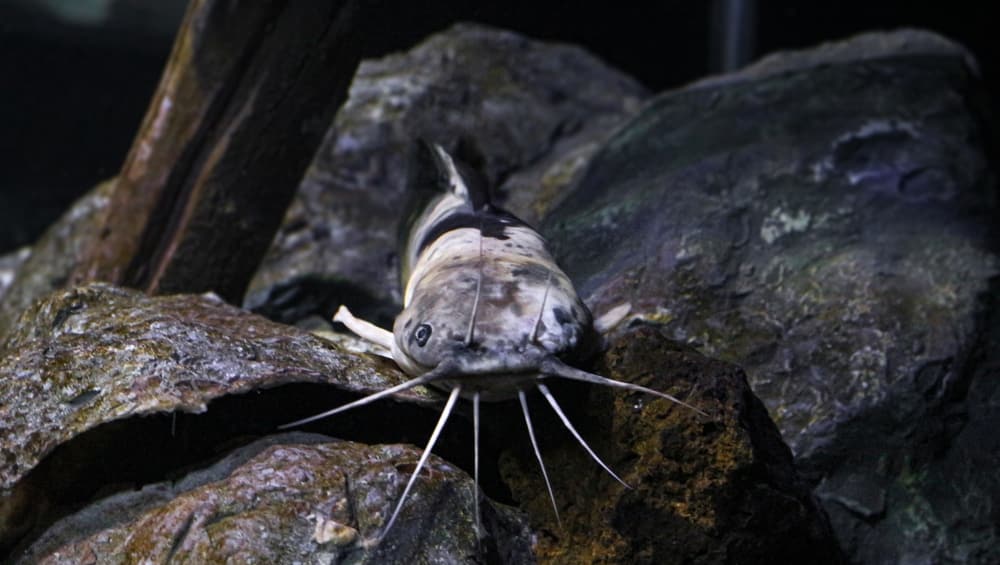
Black bullhead catfish like swimming and living in confined spaces.
©Mustafa Ragip/Shutterstock.com
This bullhead catfish thrives in low-oxygen, warm waters like some regions of Lake Pontchartrain. They’re most likely to congregate around confined areas like under dams. With taste sensors covering their bodies, the black bullhead can identify food in dark habitats — so casting in muddy waters might afford you a great catch. Usually, bullhead catfish range between one and two pounds in weight.
When to catch/chance of catching: The spawning season of black bullheads is between April and June, so any fishing trip around that window has the chance to see the species. Because they’re nocturnal fish, anglers can settle into a spot and start casting around dusk for the best chance of catching.
Creel limits, if any: The Louisiana WLF Department does not outline any size, bag, or possession limits for the black bullhead. While it does include the yellow bullhead on its list of fish with restrictions, there is currently no size or daily creel limit for yellow bullhead in state waters.
Ladyfish
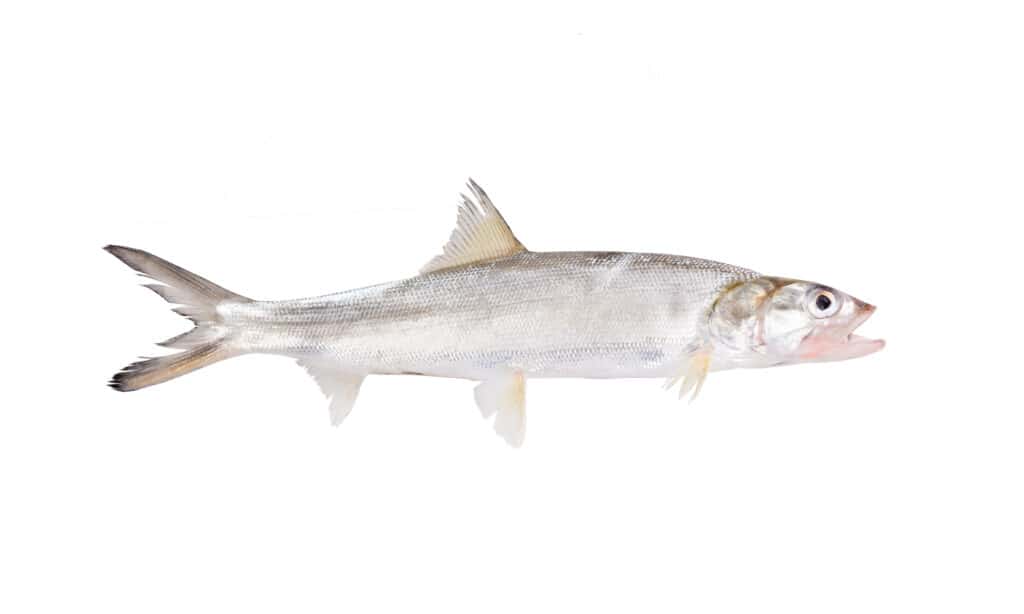
The long, sleek ladyfish is an excellent game fish, much favored by anglers.
©IrinaK/Shutterstock.com
Ladyfish, a term for the family of nine ray-finned fish in the genus Elops, spawn at sea and travel inland to warm or temperate coastal waters throughout the year. Usually, these fish max out at an average length of 3.5 feet and 22 pounds. The appearance of ladyfish — with a ribbon-like and transparent body — inspired its genus name. Elops comes from ellops, or “a kind of serpent” in Greek.
When to catch/chance of catching: Like many other fish that migrate to Lake Pontchartrain in the summer, the peak month to catch the ladyfish is July based on historical catching data. However, these hard-to-find fish only stay around for a few months and boast a measly 2.82% catch rate.
Creel limits, if any: No limits exist on WLF’s website for ladyfish.
Sheepshead
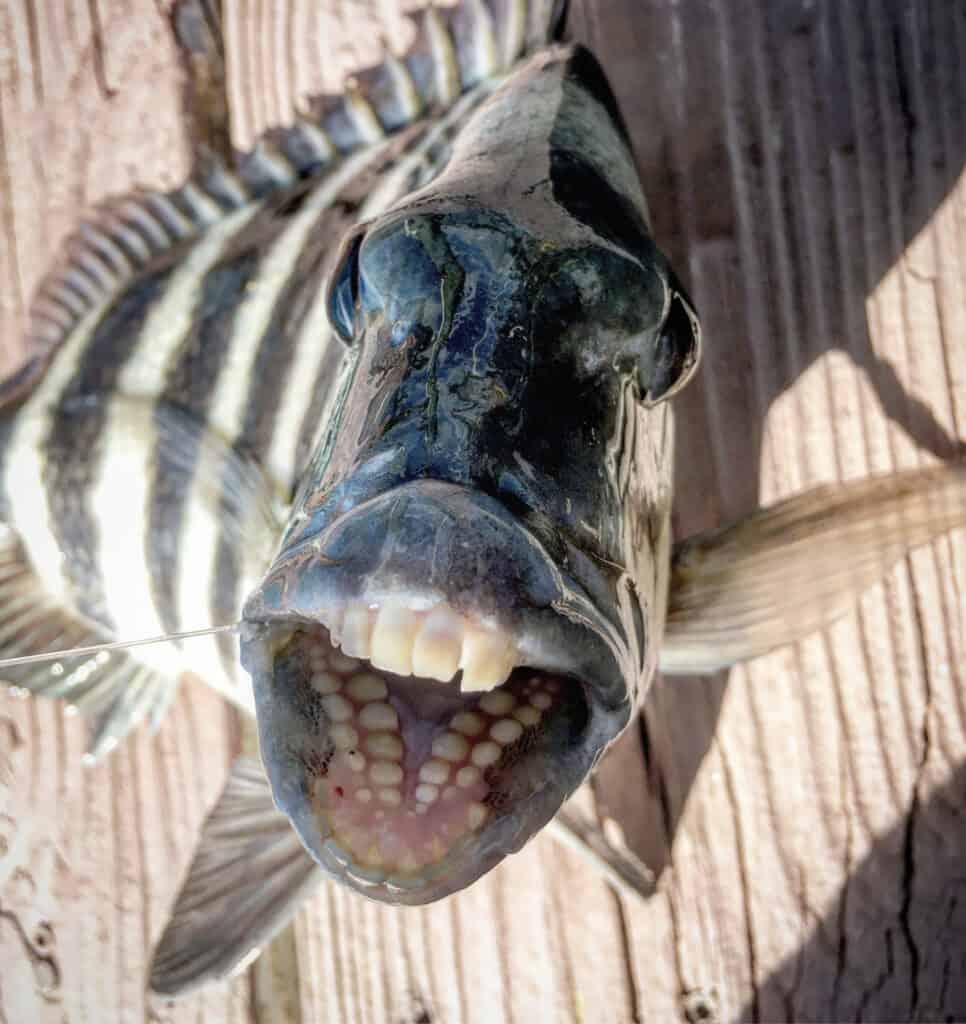
The teeth of a sheepshead fish look similar to a human’s set of teeth.
©Elonsy/Shutterstock.com
This coastal marine fish went viral on the internet in the early 2010s for its teeth because the front row closely resembles human teeth. The sheepshead fish use their several rows of teeth to break the shells of the bivalves and crustaceans that make up their diet. This includes shrimp, mole crabs, mussels, and clams.
When to catch/chance of catching: The sheepshead is in most abundance in the lake in July, though its population stays pretty steady throughout the warmer months. As long as you’re not fishing for it in December through March, you should have a pretty solid chance of coming across at least one.
Creel limits, if any: Lucky for anglers, no size, bag, or possession limits for the sheepshead fish in Lake Pontchartrain exist.
Southern Flounder
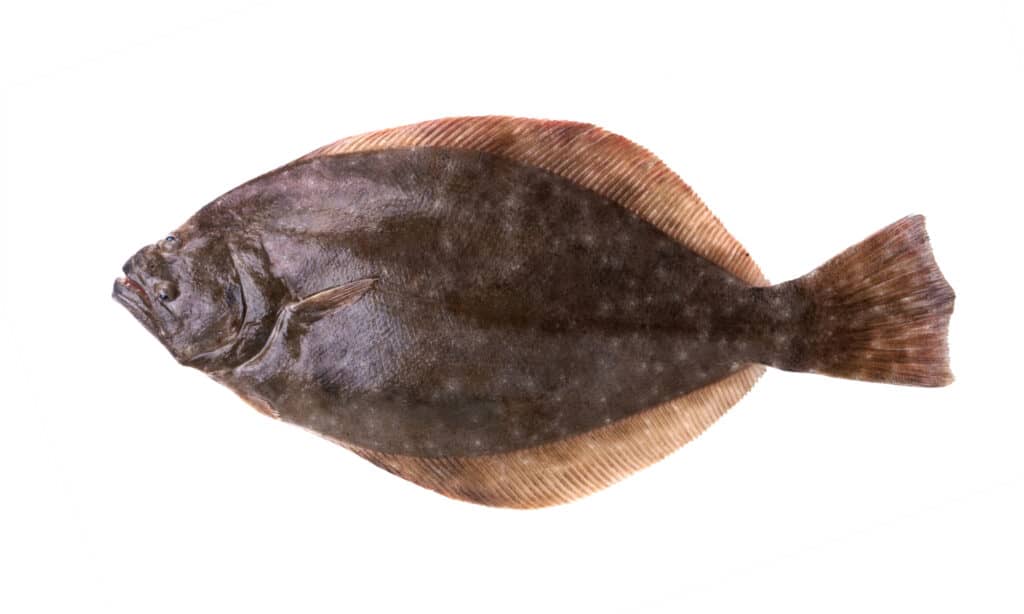
Flat and odd-looking, southern
flounder
have both eyes on one side of their body.
©IrinaK/Shutterstock.com
Southern flounders have an extremely compressed body with an odd appearance — both of their eyes are on one side of their head and many lack pectoral fins. In 2015, the IUCN Red List listed the family of flounder as near threatened, but populations in Louisiana have always been healthy.
When to catch/chance of catching: Also caught most commonly in July, the southern flounder’s population in Lake Pontchartrain’s waters dips between November and April. In May, more flounder spawn and fill the lake.
Creel limits, if any: Anglers don’t need to worry about the size of their southern flounder; they just need to adhere to the strict daily limit of 10 fish per person.
Blacktip Shark
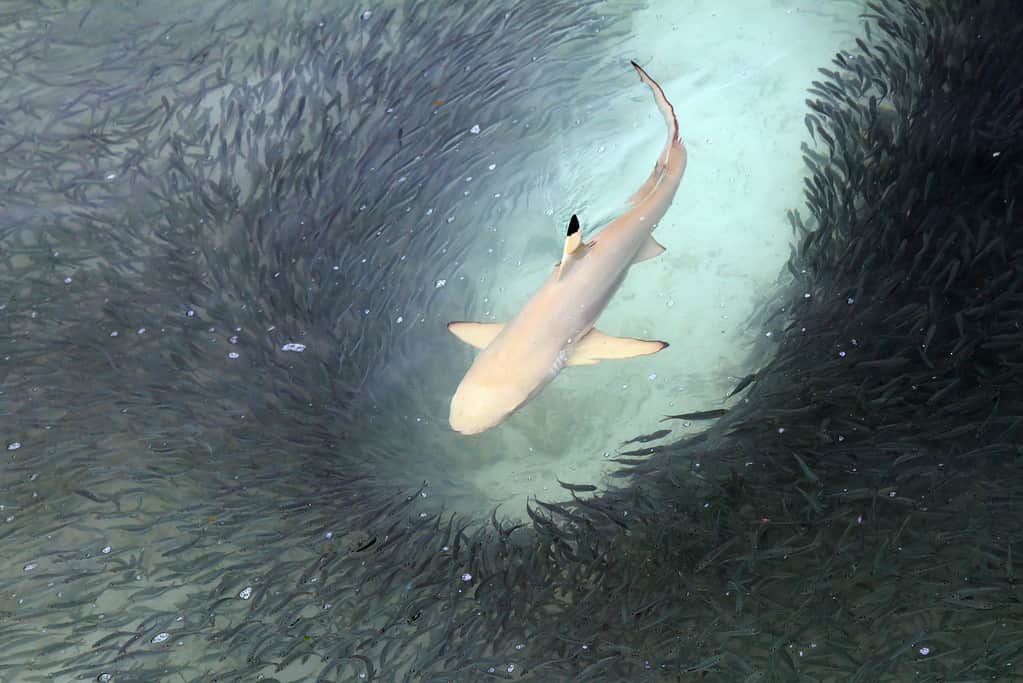
Blacktip shark get their meals by hunting through large schools of fish.
©iStock.com/RuthBlack
This species of shark has the unique behavior of jumping out of the water as it hunts though schools of fish. While it may seem like a flamboyant display of strength, biologists deem the blacktip shark’s personality as timid compared to other sharks in its family. Because of the high value of the blacktip shark’s meat, skin, fins, and liver oil, it’s both important to commercial and recreational fisheries and listed on the IUCN as “vulnerable.”
When to catch/chance of catching: In Lake Pontchartrain, and all bodies of water in Louisiana, open season for sharks on July 1. Louisiana requires vessels to have a permit and report all recreationally-caught swordfish and sharks so the state can monitor the rate of catch and protect populations.
Creel limits, if any: On all Louisiana waters, including Lake Pontchartrain, anglers can catch one blacktip shark per vessel. The minimum fork length is 54 inches.
Bull Shark
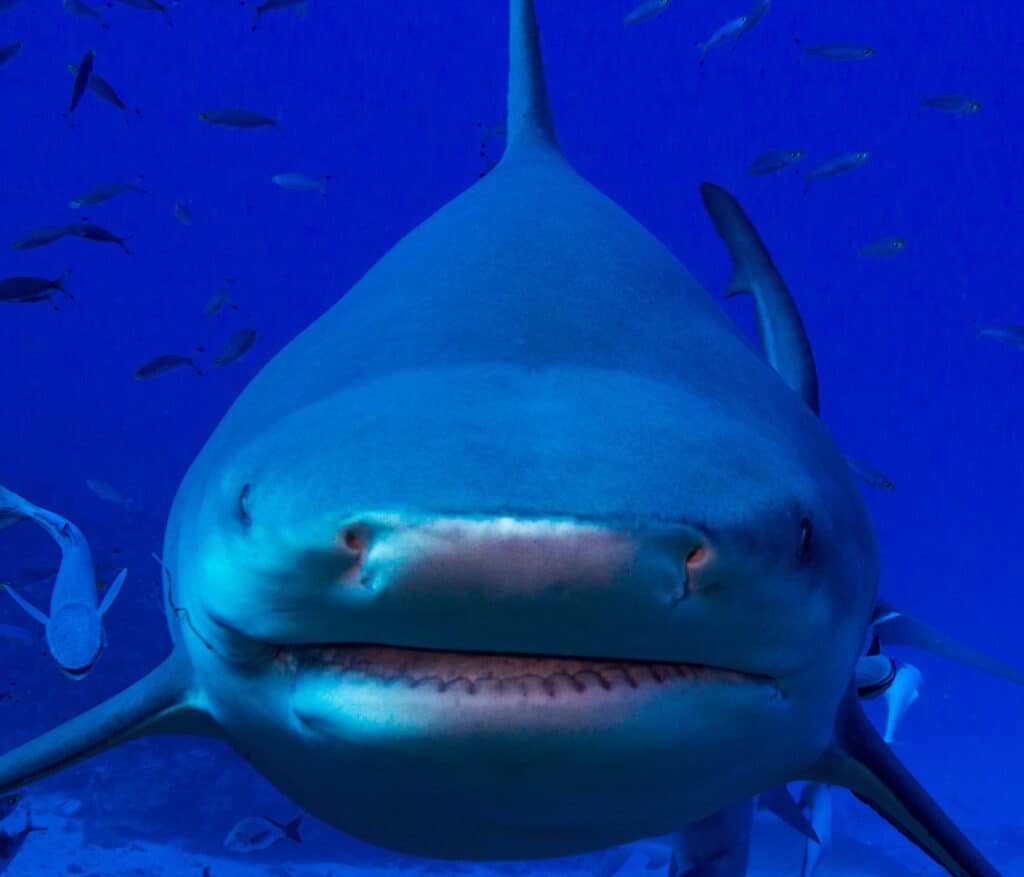
Bull sharks are one of the very few shark species that travel upriver to inland shores.
©Michael Gomes/Shutterstock.com
Another shark listed as “vulnerable” that you can catch in Louisiana is the bull shark. These are large creatures that thrive in both salt- and freshwater. Researchers and biologists believe the largest bull sharks that travel upriver are to blame for near-shore shark attack incidents inland.
When to catch/chance of catching: The closed season for harvesting sharks in Louisiana is April 1 to June 30. Outside of this window, any time an angler finds a bull shark is fair game.
Creel limits, if any: Like the creel limits for the blacktip shark, the WLF of Louisiana limits harvesting to one shark per vessel outside the closed season.
Tilefish
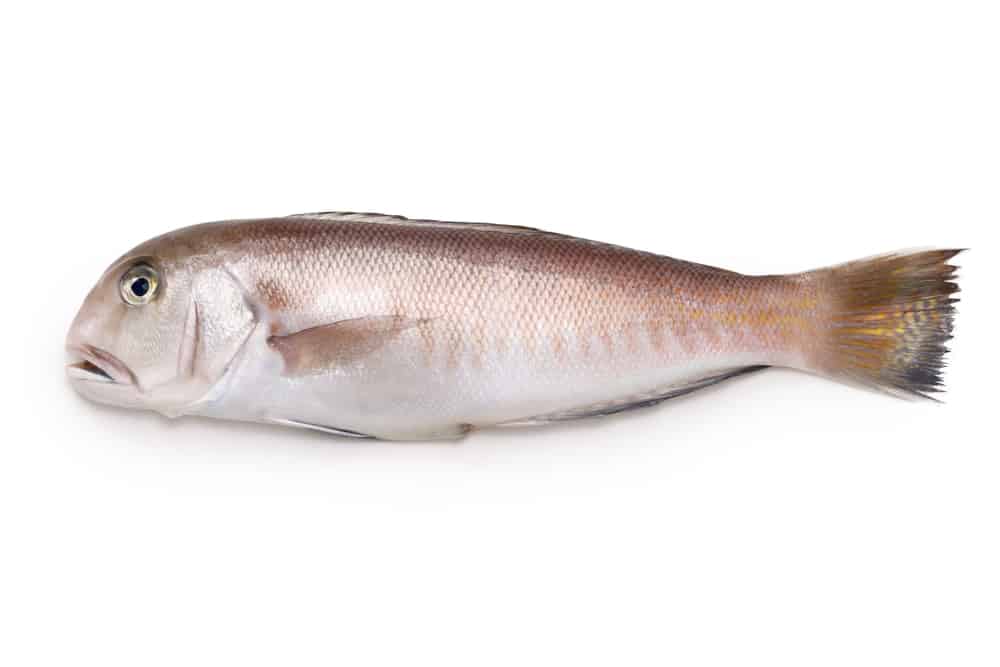
Asian countries including Japan consider tilefish a
©bonchan/Shutterstock.com
The tilefish family of fish remains a commercially- and recreationally-caught fish that many humans enjoy consuming. However, the FDA warns some at-risk populations, like pregnant or breastfeeding women, to avoid eating tilefish because of their potentially-high mercury levels. The largest of the species make great food while the smallest are favored additions to residential and commercial aquariums for their vibrant colors.
When to catch/chance of catching: Surprisingly, the best time to catch tilefish is in the winter. Because the largest tilefish swim around deep depths, some local Louisiana charters offer to help anglers catch these fish with electric reels, strong rods, and professional rigging equipment.
Creel limits, if any: Among the reef fish in Lake Pontchartrain, the tilefish has no size limit and a possession limit of 20 catches a day. Tilefish are among the species within the 20-fish aggregate bag limit, along with the vermillion snapper, lane snapper, almaco jack, gray triggerfish, goldface tilefish, and blueline tilefish.
Largemouth Bass
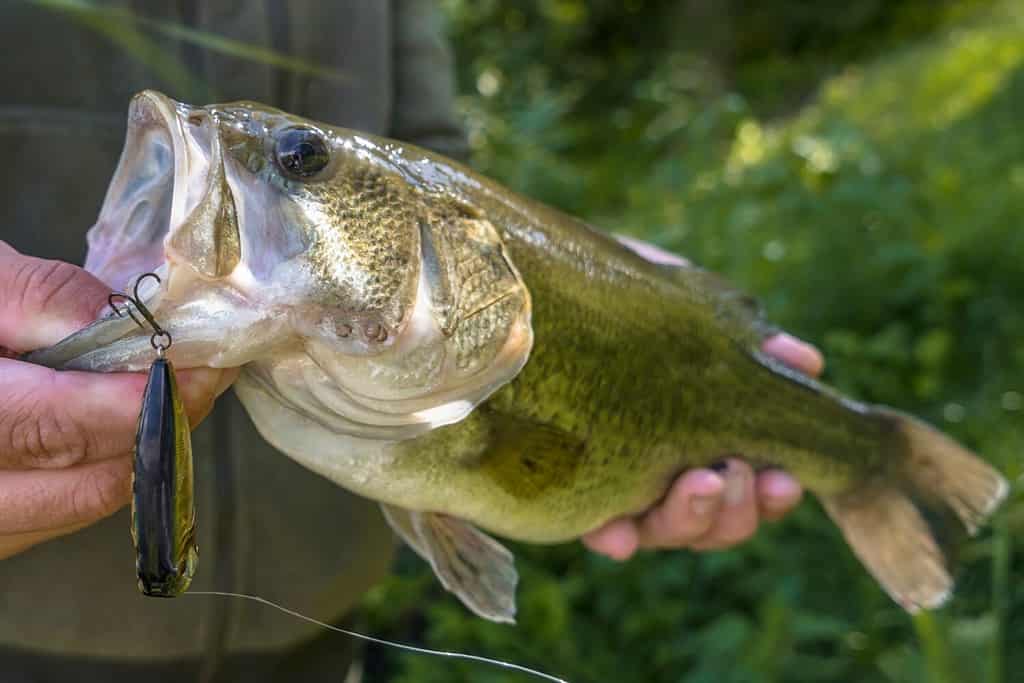
Did you know that the largemouth bass eats meat and plants?
©FedBul/Shutterstock.com
The largemouth bass is a carnivorous black bass that feeds on small fish, worms, lizards, and snails. It’s the biggest member of the bass family, with an unofficial record weight of 25 pounds. In the wild, these fish live between 10 and 16 years. They frequent vegetation for easy hunting but tend to grow slower in weedy waters.
When to catch/chance of catching: This species has two peak seasons throughout the year: the early spring between March and April, and early autumn between October and November.
Creel limits, if any: Lake Pontchartrain has a possession limit of 20 largemouth bass a day. There is no size limit.
Striped Bass
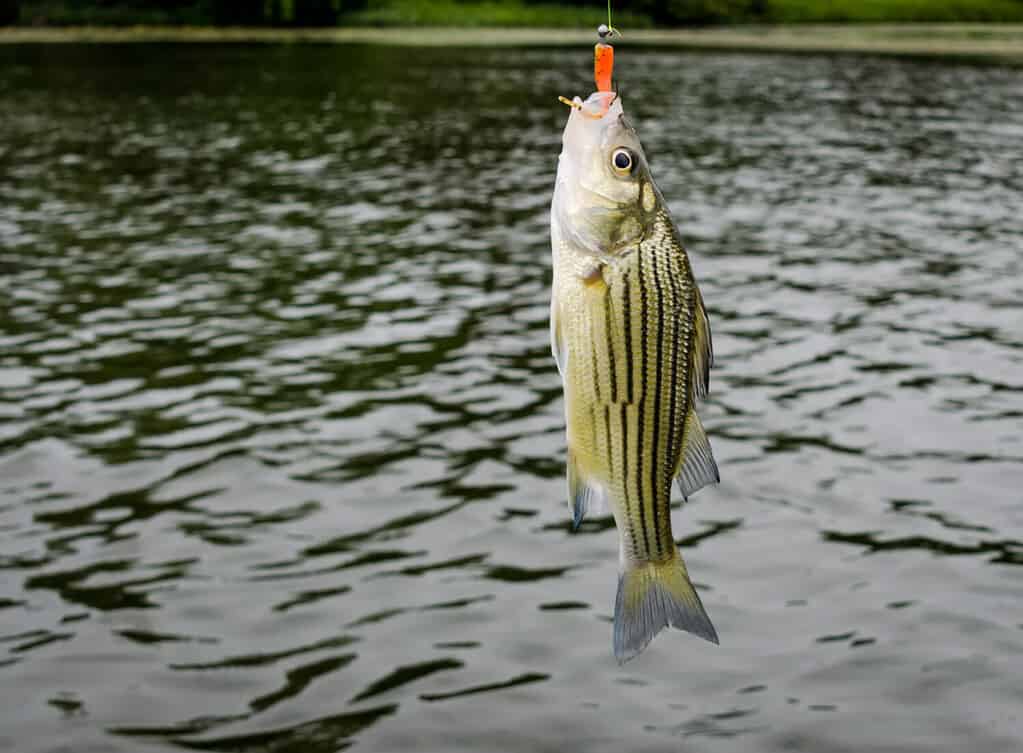
Striped bass is also known as
rockfish
.
©HildeAnna/Shutterstock.com
Also known as the rockfish, striped bass is the official state fish of seven U.S. states. These fish have silvery bodies that average between five and 20 pounds, and 20 to 35 inches long. Because they can handle freshwater and saltwater, striped bass migrates between different bodies of water.
When to catch/chance of catching: Striped bass spawns in freshwater, so it swims away from Lake Pontchartrain during spawning season to return after the young hatch. Many anglers have had success casting at night and reeling in striped bass over 10 pounds heavy.
Creel limits, if any: In all state waters, including Lake Pontchartrain, no size limit exists for striped and hybrid striped bass. However, the daily creel limit for these fish is five a day, with no more than two of those five over 30 inches in total length.
Atlantic Stingray
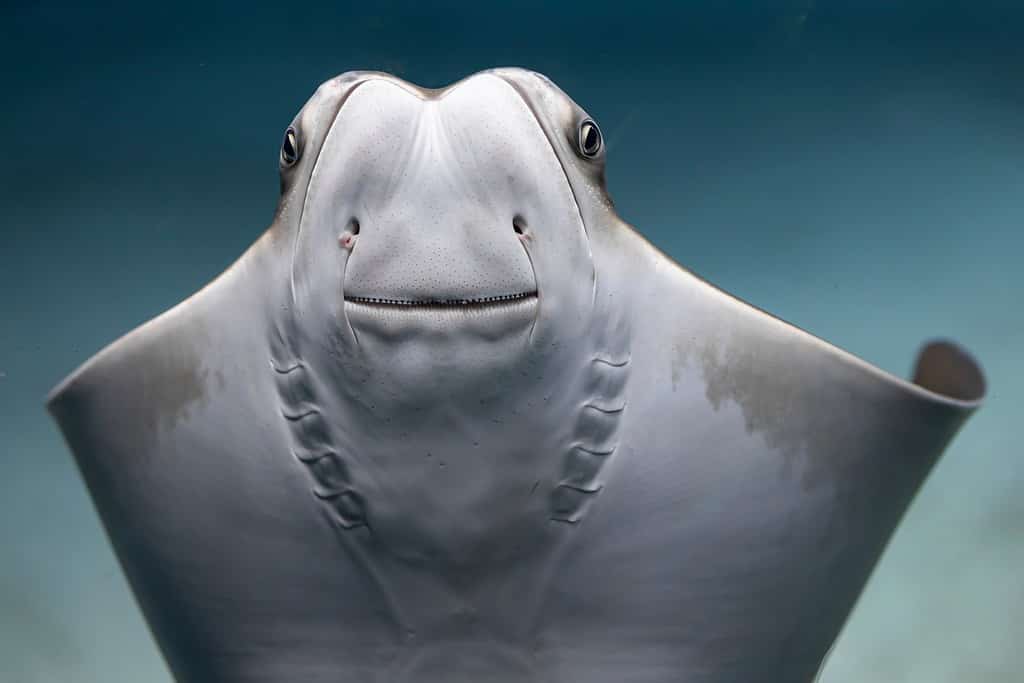
Atlantic stingrays are smaller than many other species.
©JENG BO YUAN/Shutterstock.com
This species of stingray has the capability of handling different levels of saltiness. As such, they are a highly-migratory species that roves between freshwater and saltwater based on where they want to hunt for their food and the water’s temperature. They’re a small species of stingray and have close to no commercial importance. Still, they’re an interesting prize for anglers.
When to catch/chance of catching: The mating season for the Atlantic stingray ranges between August and April. During this time, anglers might have a higher chance of seeing this fish in Lake Pontchartrain. When fishing for Atlantic stingrays, mind the barb that can cause painful stings.
Creel limits, if any: No size, bagging, or possession limits.
Gulf Sturgeon
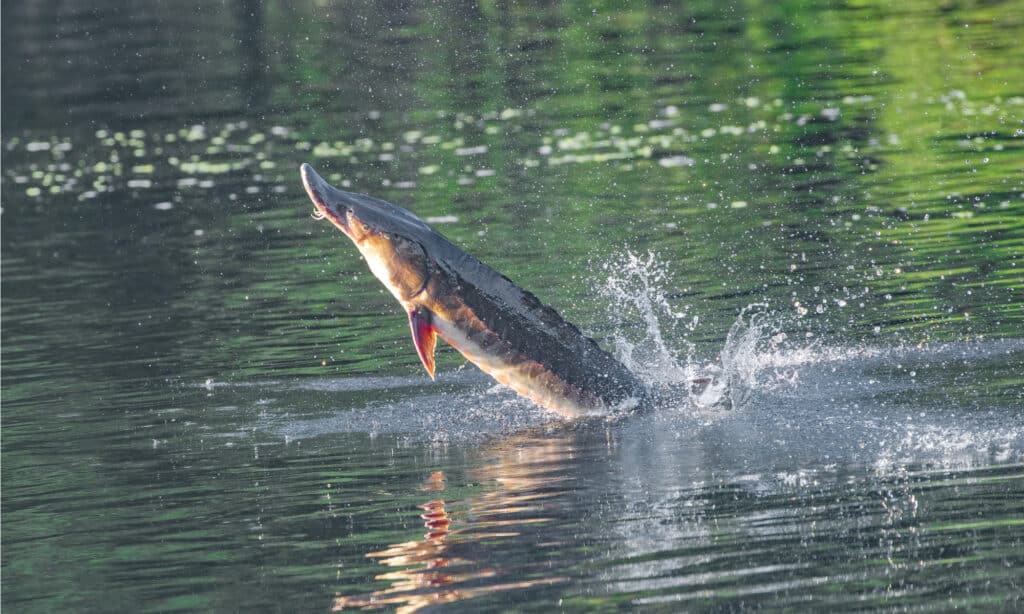
Gulf
sturgeon
can seriously injure or kill humans when they jump out of the water.
©Chase D’animulls/Shutterstock.com
This subspecies of sturgeon only lives in the Gulf of Mexico and the lakes, rivers, and straits connected to it. They look nearly identical to their cousins, the Atlantic sturgeon, with the biggest difference being their internal organs. Adult sturgeons jump out of the water during July and August to communicate with their school and maintain order. Because of their size and body armor, anglers should watch during these months to avoid being hit.
When to catch/chance of catching: The gulf sturgeon has come under federal protection because it’s an endangered species in the area. Anglers cannot harvest gulf sturgeon and will face both civil and criminal penalties if they do.
Set Sail for Lake Pontchartrain
If you’re ready to hit the waters and test your luck at catching one of these species, you’ll only need a few things. Grab your valid Louisiana fishing license, a boat (or a booked charter), and your bait. Pick your preferred fishing spot, and get ready for a great day on the water.
The photo featured at the top of this post is © iStock.com/Entropyd
Thank you for reading! Have some feedback for us? Contact the AZ Animals editorial team.






